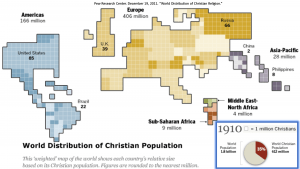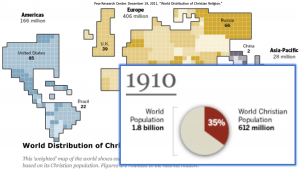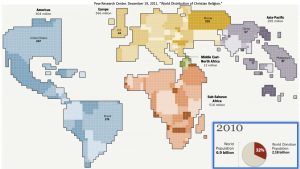Podcast: Play in new window | Download (3.0MB)
This week’s parasha, Vayakhel, means “And He assembled” and covers Exodus 35:1-38:20. It gives an account of how the Tabernacle and its furnishings were constructed.
Moses assembled the people of Israel and reminded them to observe the Sabbath. Then he told them to take up a collection of materials to be used in making the Tabernacle and its furnishings, including the ark, the table for showbread, the menorah, the altars for incense and for bunt offerings, the basin, the courtyard, and the garments for the priests. The materials were to come from anyone whose heart was willing. The people brought contributions of materials and made yarn and fine linen. Everyone whose hearts stirred them did this.
Then Moses introduced Bezalel to the people. The Lord chose Bezalel and filled him with His Spirit, with skill, ability and knowledge in all kinds of crafts. God also gave Bezalel and Oholiab the ability to teach others these arts. We usually think of gifts of the Spirit as things like gifts of wisdom and knowledge, faith, healing, miraculous powers, prophecy, distinguishing between spirits, speaking in tongues, and interpreting tongues. To Bezalel God gave the gift of artistry. God through His Spirit gives any number of gifts or abilities to His people in order to accomplish His purposes.
Moses then summoned all the other craftspeople who were willing to join Bezalel and Oholiab and do the work. They started working, and the people kept bringing more materials. But the workers said they didn’t need any more, so Moses told the people to stop bringing things. Imagine that! The joy of generosity. Bezalel and his team skillfully created the Tabernacle and its furnishings, and there’s no record of any conflict or grumbling in all of this.
Back in Exodus 33, we see that there already was a “Tent of Meeting”. But this new one was different. It was magnificent, built of a whole variety of precious materials: gold (75 pounds just for the menorah), silver, bronze, purple and scarlet yarn and fine linen, goat hair, ram skins dyed red, hides of sea cows, acacia wood. Wait… hides of sea cows? What’s that? We don’t exactly know any more. And it was built with magnificent craftsmanship.
Images of cherubim were embroidered into the fabric for the Tabernacle, and were also constructed as part of the ark’s covering. Humans have a tendency to worship powerful, beautiful things like these items in the Tabernacle. But God, the Creator of the Universe, had already warned the people against that.
The Tabernacle or Temple was the place where you met with God. That’s where God established His tangible presence. Israel was to meet with Adonai at the place and in the manner He designated; not wherever they pleased, or however they felt like making their offerings.
All was done exactly as God had instructed Moses on Mt. Sinai. God could have said to just use ordinary materials, such as wood and leather. But He didn’t. He specified all kinds of costly and colorful materials. He even specified Bezalel by name when He met with Moses.
Paul tells us that many of the instructions God gave to Israel were shadows of the things to come, and that the reality is found in Messiah. It’s also true of the Tabernacle and the Temple. Paul describes Messiah’s Community as a holy Temple in the Lord, built on the foundation of the apostles and prophets, with Messiah Yeshua as the Chief Cornerstone.
Yeshua’s disciple Peter says, “As you come to Yeshua, the living Stone—rejected by men but chosen by God and precious to Him—you also, like living stones, are being built into a spiritual house.” The Temple and Tabernacle help us understand what God is doing when He joins people to Messiah and to each other.
Here’s a map that shows Messiah’s community wherever they are living across the world. You can see Europe in yellow in the middle. North and South America are on the left in blue. Places are sized according to the number of Christians. The United Kingdom at top middle looks really large because 39 million Christians live there. Each little block represents one million Christians.
Some people might look at this and think, Christianity is a “white man’s religion” since it appears that most of the Christians are in Europe, where white people come from, and in the Americas, which they colonized. Some might say, “This Christian religion is part of your European culture… you shouldn’t impose your culture and beliefs on others. You should learn from Eastern religions like Buddhism and Hinduism.” Have you heard people say things like that? But it isn’t true.
Did you notice the date on this picture? It’s 1910.
Now here’s 2010.
Look at Africa. There are nearly as many African Christians as there are European. And see how many Asians are turning to Messiah! Yeshua saves us from our most serious enemies: sin and death. Eastern religions like Hinduism and Buddhism don’t.
God’s plan from the beginning was that Messiah’s Community would include people from every nation, language and people group. True “diversity and inclusion” didn’t originate in the HR department where you work. It’s God’s idea. His Living Temple is made of all kinds of people. All these precious, exquisite human beings God lovingly selects, redeems, and builds as living stones into His Temple.
God gave the Apostle John a vision of a great multitude no one could count, from every nation, tribe, people and language standing before God’s throne and in front of the Lamb. Yeshua invites everyone to join Him and become His disciple.
Do you want to be part of something big and beautiful? This is how God, the Creator of the universe, is restoring humankind and all of His creation. If you haven’t yet joined yourself to Messiah and become part of His Community, what are you waiting for?



